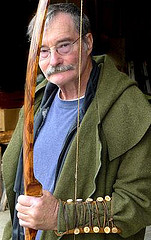On the Creative Commons blog I highlight the connection between 2009 Nobel Prize in Economics winner Elinor Ostrom‘s work on the governance of common-pool resources and relatively recent work on knowledge commons, including a 2003 paper she co-authored addressing the connection.
Great choice. There are countless posts in the econoblogosphere about the prize — I’ll mention two. Paul Romer (a favorite to win the Nobel himself) praises her practice of economics, essentially as being based on an investigation of reality rather than wishful thinking (what Romer calls a “skyhook”):
They, more than anyone else in the profession, spelled out the program that economists should follow. To make the rules that people follow emerge as an equilibrium outcome instead of a skyhook, economists must extend our models of preferences and gather field and experimental evidence on the nature of these preferences.
Economists who have become addicted to skyhooks, who think that they are doing deep theory but are really just assuming their conclusions, find it hard to even understand what it would mean to make the rules that humans follow the object of scientific inquiry. If we fail to explore rules in greater depth, economists will have little to say about the most pressing issues facing humans today – how to improve the quality of bad rules that cause needless waste, harm, and suffering.
Cheers to the Nobel committee for recognizing work on one of the deepest issues in economics. Bravo to the political scientist who showed that she was a better economist than the economic imperialists who can’t tell the difference between assuming and understanding.
Alex Tabarok (who I’ve mentioned before on the related problem of private provision of public goods provides a summary of Ostrom’s work on the well-governed commons. Here’s Tabarrok’s excellent closing paragraph:
For Ostrom it’s not the tragedy of the commons but the opportunity of the commons. Not only can a commons be well-governed but the rules which help to provide efficiency in resource use are also those that foster community and engagement. A formally government protected forest, for example, will fail to protect if the local users do not regard the rules as legitimate. In Hayekian terms legislation is not the same as law. Ostrom’s work is about understanding how the laws of common resource governance evolve and how we may better conserve resources by making legislation that does not conflict with law.
This speaks directly to commons-pool (rivalrous, non-excludable) goods, but applies analogously to public (non-rivalrous, non-excludable) goods.


